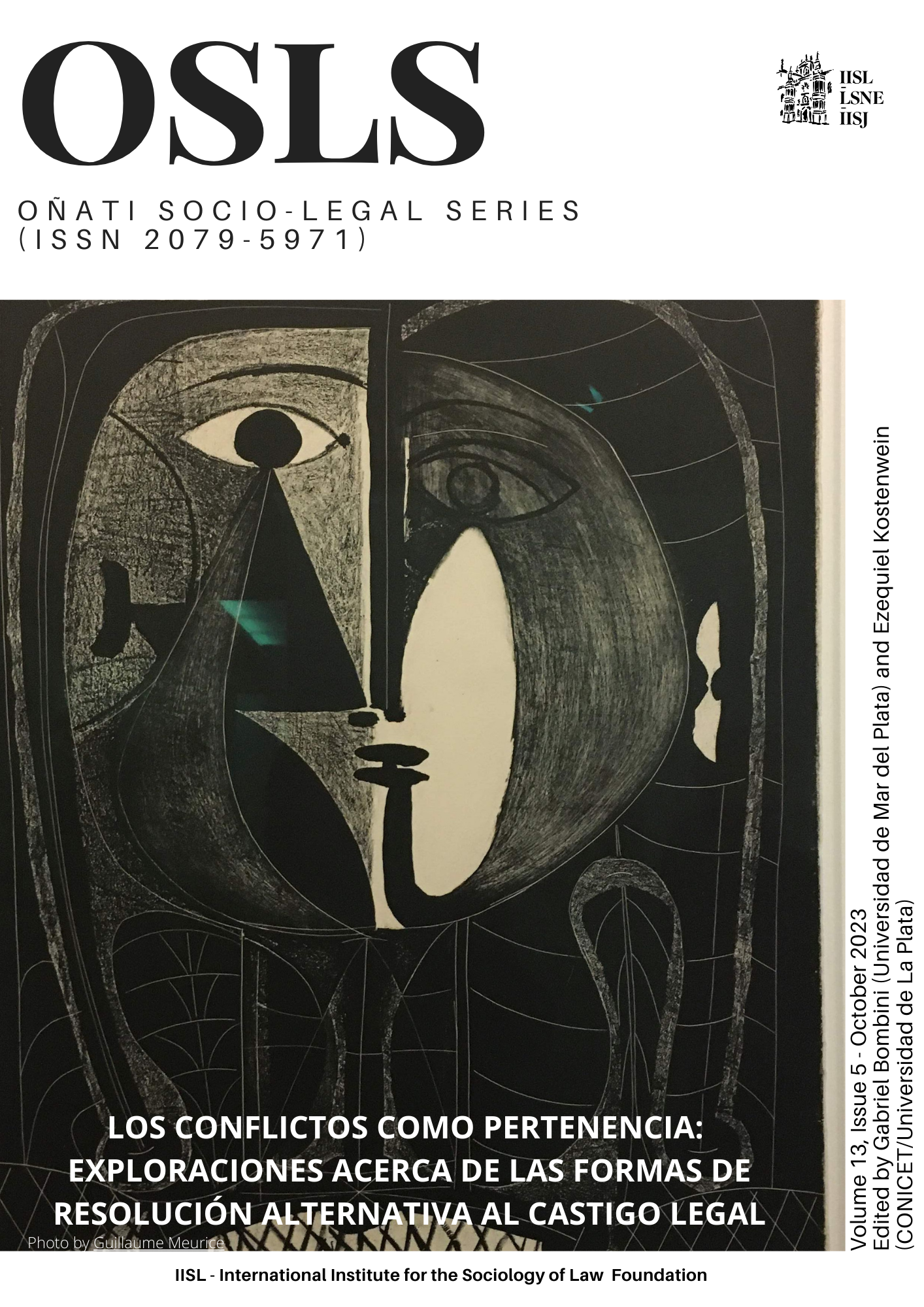Reparation as a fundamental right in Colombia
DOI:
https://doi.org/10.35295/osls.iisl.1720Keywords:
Victims, reparation, Fundamental Rights, Transitional JusticeAbstract
This work gives an account of the structural elements traced by the doctrine on the nature, content and foundation of a fundamental right in order to establish if it is correct to speak of reparation as a fundamental right within the Colombian legal order, trough the which the victims can enjoy the necessary legitimacy to claim from the State or from third parties positive actions that allow the effective realization of a minimum sphere of dignity, survival or self-determination. To achieve this objective, the requirement of the doctrine will be compared with the normative provisions expressed in the jurisprudence of the high courts, legislation and administrative actions through which the notion of victim has been defined in the context of the internal armed conflict and have defined the administrative. Judicial and symbolic means of reparation to which they are entitled; and that it is necessary to know and publicize with the aim of investing with a greater sphere of legitimacy the legal and political processes through which Colombian society moves from war to peace.
Downloads
Metrics
Global Statistics ℹ️
|
935
Views
|
477
Downloads
|
|
1412
Total
|
|
References
Abad Faciolince, H., 2020. El olvido que seremos. Bogotá: Planeta.
Carbonell, M., 2015. Introducción al derecho constitucional. Ciudad de México: Tirant lo Blanch.
Congreso de la República de Colombia, 1997. Ley 418.
Congreso de la República de Colombia, 2005. Ley 975.
Congreso de la República de Colombia, 2011. Ley 1448.
Convención americana sobre derechos humanos (Pacto de San José de Costa Rica). Organización de los Estados Americanos (OEA), 22 de noviembre de 1969.
Convención contra la tortura y otros tratos o penas crueles, inhumanos o degradantes. Asamblea General de Naciones Unidas, 10 de diciembre de 1984.
Convención interamericana para prevenir, sancionar y erradicar la violencia contra la mujer (Convención de Belém do Pará). Organización de los Estados Americanos (OEA), 9 de junio de 1994.
Convención internacional para la protección de las personas contra la desaparición forzada. Resolución de la Asamblea General de Naciones Unidas, 29 de junio de 2006.
Davis, W., 2021. Magdalena. Historias de Colombia. Bogotá: Crítica.
Declaración sobre los principios fundamentales de justicia para las víctimas de delitos y del abuso de poder. Asamblea General de Naciones Unidas, 29 de noviembre de 1985.
Estatuto de Roma de la Corte Penal Internacional. 17 de julio de 1998.
García Villegas, M., ed., 2008. Jueces sin Estado: la justicia colombiana en zonas de conflicto armado. Bogotá: Siglo del Hombre. DOI: https://doi.org/10.2307/j.ctt15sk9xm
Gutiérrez Sanín, F., 2007. ¿Lo que el viento se llevó? Los partidos políticos y la democracia en Colombia, 1958–2002. Bogotá: Norma.
Melamed, J., 2017. La justicia transicional. La llave hacia una salida negociada al conflicto armado en Colombia. Revista de relaciones internacionales, estrategia y seguridad, 12(1), 185–206. DOI: https://doi.org/10.18359/ries.2469
Melo, J.O., 2020. Colombia: una historia mínima. Bogotá: Crítica.
Otero, A.M., 2016. Constituciones y ciudadanía en el siglo XIX colombiano. En: Banco de la República, De toda la gente: 25 años de la asamblea nacional constituyente [exposición]. Bogotá: Banco de la República.
Pacto internacional de derechos civiles y políticos. Asamblea General de Naciones Unidas, 16 de diciembre de 1966.
Restrepo, J.F., 2020. Estructura constitucional del estado colombiano. Bogotá: Ibáñez.
Rey Cantor, E., 2006. El bloque de constitucionalidad. Aplicación de tratados internacionales de derechos humanos. Estudios constitucionales, 4(2), 299–334.
Rodelo García, M., 2020. Aproximación crítica al conflicto armado en Colombia. Advocatus, 17(84), 83–106. DOI: https://doi.org/10.18041/0124-0102/a.34.6591
Ungar, E., y Cardona, J., 2010. La ley de justicia y paz, ¿Una iniciativa para reducir la exposición penal de narcotraficantes y paramilitares? En: C. López, ed., Y refundaron la patria… De cómo mafiosos y políticos reconfiguraron el Estado colombiano. Bogotá: Debate.
Uribe de Hincapié, M.T., 2003. Estado y sociedad frente a las víctimas de la violencia. Estudios políticos, vol. 23, 9–25. DOI: https://doi.org/10.17533/udea.espo.1383
Downloads
Published
How to Cite
Issue
Section
License
Copyright (c) 2023 John Fernando Restrepo Tamayo

This work is licensed under a Creative Commons Attribution-NonCommercial-NoDerivatives 4.0 International License.
OSLS strictly respects intellectual property rights and it is our policy that the author retains copyright, and articles are made available under a Creative Commons licence. The Creative Commons Non-Commercial Attribution No-Derivatives licence is our default licence and it regulates how others can use your work. Further details available at https://creativecommons.org/licenses/by-nc-nd/4.0 If this is not acceptable to you, please contact us.
The non-exclusive permission you grant to us includes the rights to disseminate the bibliographic details of the article, including the abstract supplied by you, and to authorise others, including bibliographic databases, indexing and contents alerting services, to copy and communicate these details.
For information on how to share and store your own article at each stage of production from submission to final publication, please read our Self-Archiving and Sharing policy.
The Copyright Notice showing the author and co-authors, and the Creative Commons license will be displayed on the article, and you must agree to this as part of the submission process. Please ensure that all co-authors are properly attributed and that they understand and accept these terms.























